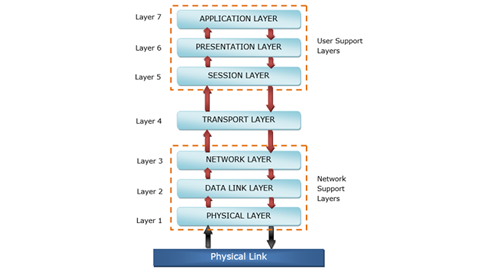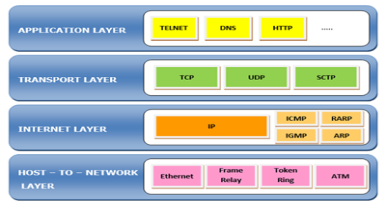THE OSI MODEL AND TCP/IP MODEL:
The OSI model is a layered framework for designing network systems that allows communication between all types of computer systems. It consists of seven separate but related layers, each of which defines a part of the process involved in moving information across a network. Understanding the fundamentals of the OSI model provides a solid foundation for studying data communications.

The Seven Layers of the OSI Model
- Physical Layer:
Transmits raw bits from one node to another over a physical medium. - Data Link Layer:
Ensures the reliable transfer of data frames between two nodes connected by the physical layer. - Network Layer:
Delivers each piece of data from the source to the destination using proper addressing and route selection. - Transport Layer:
In this task, you are responsible for connecting user applications with the transport layer. - Session Layer:
Establishes, manages, and terminates sessions between users and provides services such as dialog control and synchronization. - Presentation Layer:
Guarantees correct syntax and semantics of the data by translating, compressing and encrypting it. - Application Layer:
Provides high-level APIs (Application Programming Interfaces) for users and enables network services.
The TCP/IP Reference Model
The TCP/IP Reference Model is a four-layered suite of communication protocols developed by the U.S. Department of Defense (DoD) in the 1960s. This industry is called SMTE for its fundamental protocols.
- TCP (Transmission Control Protocol)
Four important layers make up the TCP/IP Protocol Suite.
- Host-to-Network Layer:
The lowest part deals with transferring data over a physical line. TCP/IP does not outline a protocol for this layer instead of allowing all standard protocols to work. - Internet Layer:
Moves data across the network without being haphazard. We mainly depend on IP to get things done here.. In addition, ICMP, IGMP, RARP and ARP are part of the basic protocol suite. - Transport Layer:
Platform verifies data and ensures the information is fully delivered correctly. Many procedures in computer networking are based on TCP (Transmission Control Protocol) and UDP (User Datagram Protocol). - Application Layer:
Here, the main responsibility is to act as the bridge between user applications and the transport layer. Protocols covered by TCP/IP include Telnet, DNS, HTTP, FTP and SMTP

Conclusion:
The Indian Institute of Embedded Systems (IIES) is a renowned institution that offers top-notch education and training in the field of embedded systems. With its comprehensive curriculum and experienced faculty, IIES is a leading choice for individuals aspiring to excel in this domain.



